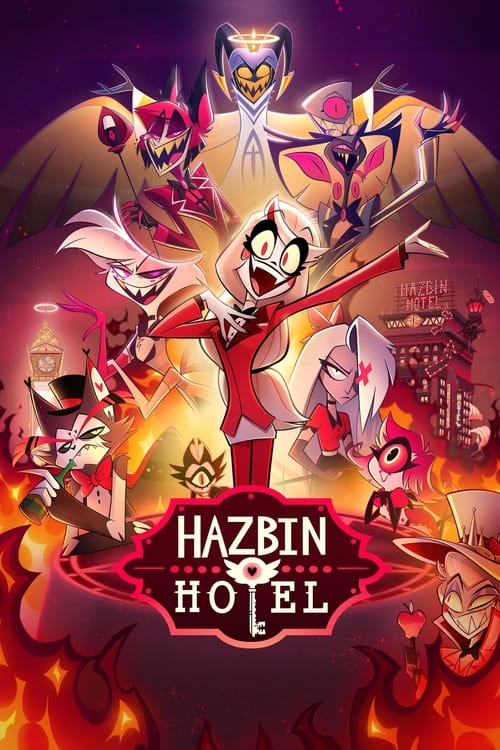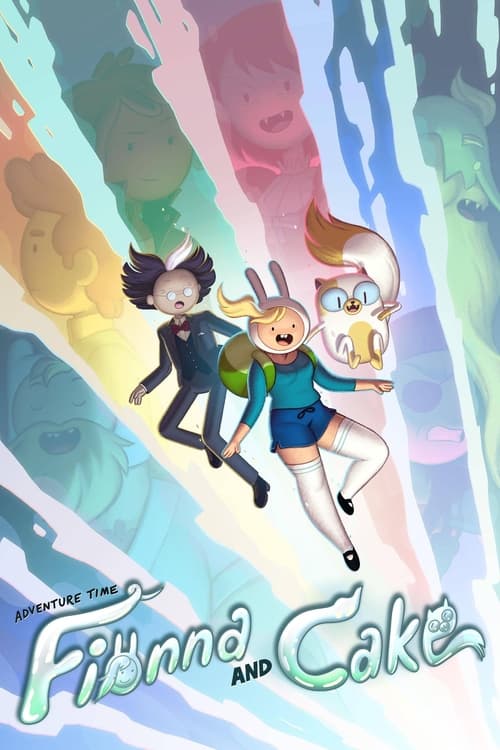
Ask Your Own Question
What is the plot?
In the first episode of "Naze soko?", we are introduced to the protagonist, a high school student named Kenta. He is depicted as a somewhat introverted and observant boy who often feels out of place among his peers. The story begins with Kenta receiving a mysterious letter that invites him to a secret meeting at an abandoned building. Intrigued yet apprehensive, he decides to attend, hoping to find answers about his feelings of isolation.
Upon arriving at the location, Kenta meets a group of students who share similar experiences of feeling disconnected from their surroundings. They discuss their struggles and the reasons behind their feelings of alienation. The atmosphere is tense yet cathartic, as each member reveals their personal stories. Kenta feels a sense of belonging for the first time, but he is also wary of the group's intentions.
As the meeting progresses, the group leader, a charismatic girl named Yuki, proposes a plan to confront their feelings head-on by engaging in a series of challenges that will push them out of their comfort zones. Kenta is hesitant but ultimately agrees, motivated by his desire to connect with others. The first challenge involves a public speaking event where each member must share their deepest fears in front of an audience. Kenta struggles with this task, but with encouragement from Yuki, he manages to open up about his insecurities.
The second episode escalates the challenges as the group decides to embark on a scavenger hunt throughout the city. Each clue is designed to lead them to significant locations tied to their past experiences. During this adventure, Kenta begins to bond with the other members, particularly with Yuki, who shares her own story of loss and longing. As they navigate the city, they encounter various obstacles, including a confrontation with a group of bullies who mock their efforts. Kenta stands up for his friends, showcasing newfound courage, which deepens his connection with the group.
In the third episode, the challenges take a darker turn when the group decides to explore a haunted location rumored to be linked to a tragic event. As they delve into the history of the place, they uncover unsettling truths about the past, including a story of betrayal and loss that resonates with their own struggles. The atmosphere becomes increasingly tense, and Kenta begins to feel the weight of the group's emotional baggage. This leads to a pivotal moment where he must confront his own fears and insecurities, ultimately deciding to take a leadership role in guiding the group through their emotional turmoil.
The fourth episode focuses on the aftermath of their haunted exploration. The group members are shaken by the revelations and begin to question their motivations for participating in the challenges. Kenta, feeling responsible for the group's well-being, organizes a meeting to discuss their feelings. During this gathering, tensions rise as some members express doubts about the group's purpose. Kenta's determination to keep the group together is tested, and he must navigate the conflicting emotions of his peers while also dealing with his own self-doubt.
In the fifth episode, the group decides to take a break from the challenges and focus on individual growth. Each member is tasked with pursuing a personal goal that reflects their journey. Kenta chooses to confront his family issues, particularly his strained relationship with his father. This decision leads to an emotional confrontation where Kenta expresses his feelings of inadequacy and longing for acceptance. The scene is charged with raw emotion, showcasing Kenta's vulnerability and desire for connection.
As the series progresses, the group faces various trials that test their bonds. In the sixth episode, they encounter a major setback when one member, feeling overwhelmed, decides to leave the group. This departure creates a rift among the remaining members, leading to a heated argument that threatens to dismantle everything they have built. Kenta, feeling the weight of leadership, steps in to mediate the conflict, emphasizing the importance of support and understanding.
In the seventh episode, the group comes together for a final challenge that requires them to confront their fears in a public setting. This event serves as a culmination of their journey, allowing each member to showcase their growth. Kenta takes center stage, sharing his story of transformation and the importance of connection. The emotional climax of the episode is marked by a powerful moment of solidarity among the group, as they support one another in their vulnerabilities.
The series concludes with a reflective tone in the eighth episode. The group members gather one last time to discuss their experiences and the impact of their journey on their lives. Kenta expresses gratitude for the connections he has formed and the lessons learned. The final scene shows the group walking together, symbolizing their newfound sense of belonging and the strength they have gained through their shared experiences. The series ends on a hopeful note, leaving viewers with a sense of closure regarding Kenta's journey and the bonds formed among the characters.
What is the ending?
In the ending of "Naze soko?", the main characters confront their pasts and the choices they have made. The story culminates in a series of emotional revelations and reconciliations, leading to a bittersweet resolution for each character.
As the final episodes unfold, the characters gather at a significant location that holds memories of their shared experiences. Tensions rise as they confront unresolved issues, leading to heartfelt discussions. Each character reveals their vulnerabilities, and the weight of their past decisions becomes apparent. The climax occurs when they must decide whether to move forward together or part ways, ultimately choosing to embrace their connections despite the pain.
In the closing scenes, the characters find a sense of closure. They acknowledge their growth and the lessons learned from their struggles. The series ends on a hopeful note, suggesting that while the past cannot be changed, the future holds possibilities for healing and new beginnings.
As the final episodes of "Naze soko?" unfold, the atmosphere is thick with anticipation and unresolved tension. The characters, each carrying the weight of their past decisions, gather at a familiar location--a park where they once shared laughter and dreams. The sun hangs low in the sky, casting long shadows that mirror the complexities of their relationships.
Scene 1: The Gathering The camera pans over the park, capturing the vibrant colors of autumn leaves. The characters arrive one by one, their expressions a mix of apprehension and hope. As they settle onto a weathered bench, the air is charged with unspoken words. Each character's internal struggle is palpable; they are haunted by their choices, yet yearning for connection.
Scene 2: Confrontation As the conversation begins, the mood shifts. Taro, the group's unofficial leader, breaks the silence. His voice trembles as he admits to feeling responsible for their collective pain. The others listen intently, their eyes reflecting a blend of anger and understanding. Yuki, who has always been the peacemaker, speaks up, urging them to confront their feelings rather than bury them. The tension escalates as old grievances surface, leading to a heated exchange between Taro and Akira, who feels betrayed by Taro's decisions.
Scene 3: Vulnerability In a moment of vulnerability, Mei, the quiet observer, shares her own struggles with self-acceptance. Her voice quivers as she recounts the moments when she felt invisible. The group falls silent, the weight of her words hanging in the air. This revelation acts as a catalyst, prompting each character to reflect on their own insecurities. One by one, they begin to share their fears and regrets, creating a tapestry of shared experiences that binds them closer together.
Scene 4: The Climax The climax of the episode arrives when Taro proposes a choice: they can either continue to dwell on the past or choose to support one another moving forward. The group is divided; some are hesitant to let go of their grievances, while others are eager to embrace a new beginning. The emotional stakes are high, and the camera captures the raw expressions of each character as they grapple with this pivotal moment.
Scene 5: Resolution In the final moments, a sense of clarity washes over the group. They realize that their shared history, with all its pain and joy, has shaped who they are. They decide to move forward together, acknowledging that while the past cannot be erased, it can be a foundation for growth. As they stand up from the bench, the sun breaks through the clouds, illuminating their faces with a warm glow.
Scene 6: Farewell and Hope The series concludes with a montage of the characters embarking on new paths. Taro takes a step towards pursuing his dreams, Yuki volunteers at a local community center, Akira reconnects with his family, and Mei begins to express herself through art. Each character's fate reflects their journey of self-discovery and healing. The final shot lingers on the park, now empty but filled with echoes of laughter and friendship, symbolizing the enduring bonds they have forged.
In this poignant ending, "Naze soko?" encapsulates the themes of reconciliation, growth, and the importance of human connection, leaving viewers with a sense of hope for the future.
Is there a post-credit scene?
In the 2011 TV show "Naze soko?", there is indeed a post-credit scene that adds a layer of depth to the narrative. After the main credits roll, viewers are treated to a brief but poignant moment that encapsulates the themes of connection and understanding that permeate the series.
The scene opens with a quiet, serene view of the city at dusk, the sky painted in hues of orange and purple. The camera pans down to a small park where the main characters, who have been through a tumultuous journey, are seen sitting on a bench. Their expressions are a mix of relief and contemplation, reflecting on the events that have transpired throughout the series.
As they sit in silence, the atmosphere is thick with unspoken words and shared experiences. One character, visibly more introspective, gazes at the ground, lost in thought. The other character, sensing the weight of the moment, gently nudges them, prompting a conversation that feels both natural and necessary. They discuss their hopes for the future, the lessons they've learned, and the bonds they've formed. This exchange is filled with emotional resonance, showcasing their growth and the strength of their friendship.
The scene concludes with a soft laugh shared between them, a moment of lightness that contrasts with the heavier themes explored in the series. As they stand to leave, the camera lingers on the park, capturing the fading light and the sense of possibility that lies ahead. The screen fades to black, leaving viewers with a sense of closure and hope, reinforcing the idea that while challenges may arise, the connections we forge can guide us through.
What is the significance of the character Kenta's relationship with his father?
Kenta's relationship with his father is central to his character development throughout the series. Initially, Kenta feels a deep sense of resentment towards his father, who is often absent due to work commitments. This absence creates a void in Kenta's life, leading him to seek validation and connection elsewhere. As the story progresses, Kenta's internal struggle is depicted through flashbacks and emotional confrontations, revealing his longing for approval and understanding. The climax of their relationship occurs when Kenta confronts his father about his feelings, leading to a poignant reconciliation that highlights themes of forgiveness and the complexity of familial bonds.
How does the character Yuki cope with her feelings of isolation?
Yuki's journey through isolation is portrayed with raw emotional depth. Initially, she is depicted as a quiet and introspective girl, often feeling like an outsider among her peers. Her coping mechanisms include immersing herself in her art, which serves as both an escape and a means of expression. The series visually contrasts her vibrant artwork with her muted reality, emphasizing her internal struggle. As she gradually opens up to her friends, the audience witnesses her emotional growth, culminating in a powerful scene where she shares her artwork at a school exhibition, symbolizing her newfound confidence and connection to others.
What role does the mysterious object play in the story?
The mysterious object serves as a catalyst for the unfolding events in 'Naze soko?'. Initially discovered by Kenta and Yuki, it is shrouded in enigma, sparking curiosity and speculation among the characters. As the plot progresses, the object is revealed to have a deeper significance, tied to the characters' pasts and their intertwined fates. Its presence evokes a sense of wonder and fear, leading to pivotal moments of revelation and conflict. The object ultimately symbolizes the hidden truths that each character must confront, driving the narrative towards its emotional climax.
How does the friendship between Kenta and Yuki evolve throughout the series?
Kenta and Yuki's friendship evolves from a tentative connection to a profound bond that anchors the narrative. Initially, they are portrayed as two lonely souls who find solace in each other's company. Their interactions are filled with awkwardness and unspoken feelings, reflecting their individual struggles. As they face various challenges together, including the mystery of the object and personal dilemmas, their friendship deepens. Key scenes, such as shared moments of vulnerability and support during crises, illustrate their growing trust and reliance on one another. The climax of their relationship is marked by a heartfelt confession, solidifying their bond and highlighting the theme of companionship.
What are the implications of the town's history on the characters' lives?
The town's history is intricately woven into the characters' lives, shaping their identities and experiences. The series reveals that the town has a legacy of secrets and tragedies that haunt its residents. Through flashbacks and local legends, the audience learns how past events have influenced the characters' families and their current struggles. For instance, Kenta's family is directly affected by a historical event that led to their social standing, while Yuki grapples with the weight of her family's reputation. This backdrop creates a rich tapestry of emotional stakes, as the characters navigate their personal histories while seeking to forge their own paths amidst the shadows of the past.
Is this family friendly?
"Naze soko?" is a Japanese television show that explores various social issues and human experiences through a series of vignettes. While the show is generally suitable for a wide audience, there are some elements that may be considered objectionable or upsetting for children or sensitive viewers.
-
Emotional Themes: The show delves into complex emotional situations, including themes of loss, loneliness, and existential questioning, which may be difficult for younger viewers to fully understand or process.
-
Social Issues: Some episodes tackle serious social issues such as poverty, discrimination, and mental health struggles. These topics can be heavy and may evoke strong emotional responses.
-
Mature Situations: There are instances of characters facing moral dilemmas or engaging in behavior that may not be appropriate for children, such as discussions about relationships and personal choices.
-
Visual Imagery: Certain scenes may depict distressing situations or environments that could be unsettling, such as depictions of urban decay or emotional breakdowns.
-
Character Conflicts: The interpersonal conflicts between characters can sometimes escalate to intense arguments or confrontations, which may be distressing for sensitive viewers.
Overall, while "Naze soko?" offers valuable insights into human experiences, its exploration of deeper emotional and social issues may not be suitable for all children or sensitive individuals. Viewer discretion is advised.













